The Infantry of the British Army comprises 49 infantry battalions, from 19 regiments. Of these, 33 battalions are part of the Regular army and the remaining 16 a part of the Army Reserve. The British Army's Infantry takes on a variety of roles, including armoured, mechanised, air assault and light.

Brigade of Gurkhas is the collective name which refers to all the units in the British Army that are composed of Nepalese Gurkha soldiers. The brigade draws its heritage from Gurkha units that originally served in the British Indian Army prior to Indian independence, and prior to that served for the East India Company. The brigade includes infantry, engineering, signal, logistic and training and support units. They are known for their khukuri, a distinctive heavy knife with a curved blade, and have a reputation for being fierce and brave soldiers.
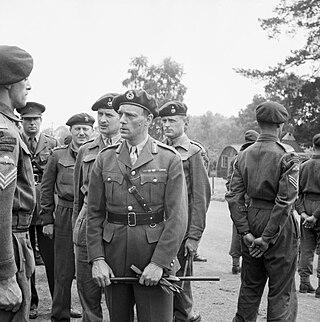
The green beret was the official headdress of the British Commandos, a special-forces unit active during World War II. It is still worn by members of the Royal Marines after passing the Commando Course, and personnel from other units of the Royal Navy, Army and RAF who serve within 3 Commando Brigade and who have passed the All Arms Commando Course.

The Royal Gurkha Rifles (RGR) is a rifle regiment of the British Army, forming part of the Brigade of Gurkhas. Unlike other regiments in the British Army, RGR soldiers are recruited from Nepal, which is neither a dependent territory of the United Kingdom nor a member of the Commonwealth.
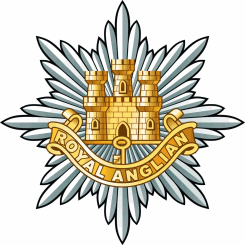
The Royal Anglian Regiment is an infantry regiment of the British Army. It consists of two Regular battalions and one Reserve battalion. The modern regiment was formed in 1964, making it the oldest of the Line Regiments now operating in the British Army, and can trace its history back to 1685. The regiment was the first of the large infantry regiments and is one of the three regiments of the Queen's Division.
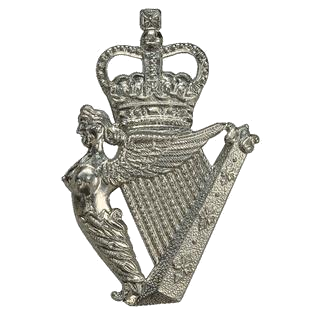
The Royal Irish Regiment is an infantry regiment of the British Army. The regiment was founded in 1992 through the amalgamation of the Royal Irish Rangers and the Ulster Defence Regiment. Their oldest predecessor, the 27th Regiment of Foot, was first raised in June 1689 to fight in the Williamite War in Ireland. Other notable regiments in their lineage include the Royal Inniskilling Fusiliers, Royal Irish Rifles and the Royal Irish Fusiliers.
The Rifles is an infantry regiment of the British Army. Formed in 2007, it consists of four Regular battalions and three Reserve battalions. Each Regular battalion of The Rifles was formerly an individual battalion of one of the two large regiments of the Light Division. Since formation, the regiment has been involved in combat operations in the later stages of the Iraq War and in the War in Afghanistan.

The Malaysian Army is the land component of the Malaysian Armed Forces. Steeped in British Army traditions, the Malaysian Army does not carry the title ‘royal’ as do the Royal Malaysian Navy and the Royal Malaysian Air Force. Instead, the title is bestowed on selected army corps and regiments who have been accorded the honour by the Yang di-Pertuan Agong, who is the Supreme Commander of the Malaysian Armed Forces.

The black beret is a colour of beret, a type of headgear. It is commonly worn by paramilitaries and militaries around the world, particularly armored forces such as the British Army's Royal Tank Regiment (RTR), the Royal Canadian Armoured Corps (RCAC), and Royal Australian Armoured Corps (RAAC) and the Indian Army Armoured Corps and Indian Border Security Force. Notable non-armored military units to wear the black beret include the non-military police and non-special forces elements of the Irish Defence Forces, MOD Guard Service, Russian Naval Infantry and Russian OMON units, the United States Air Force (USAF) Tactical Air Control Party (TACP), Philippine National Police-Special Action Force (PNP-SAF) members, and the Royal Canadian Navy. It was also worn by the United Kingdom's Royal Observer Corps (ROC) with their Royal Air Force (RAF) uniform, Metropolitan Manila Development Authority (MMDA).

The 10th Parachute Brigade, abbreviated as 10 PARA BDE, is an elite division-sized hybrid airborne-marine unit within the Malaysian Army. It is tasked with rapid reaction forces inside or outside the boundaries of Malaysia and serves as the key element of the Malaysian Rapid Deployment Force.

The maroon beret in a military configuration has been an international symbol of airborne forces since the Second World War. It was first officially introduced by the British Army in 1942, at the direction of Major-General Frederick "Boy" Browning, commander of the British 1st Airborne Division. It was first worn by the Parachute Regiment in action in North Africa during November 1942.
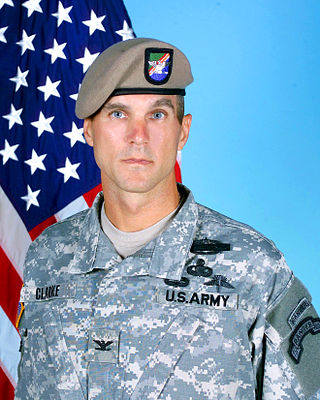
The tan beret, also known as a beige beret, has been adopted as official headgear by several special operations forces as a symbol of their unique capabilities.
The red beret is a military beret worn by many military police, paramilitary, commando, and police forces and should not be confused with the maroon beret worn by airborne troops all around the world.

In the United States (US) military, a beret flash is a shield-shaped embroidered cloth that is typically 2.25 in (5.72 cm) tall and 1.875 in (4.76 cm) wide with a semi–circular base that is attached to a stiffener backing of a military beret. These flashes—a British English word for a colorful cloth patch attached to military headgear—are worn over the left eye with the excess cloth of the beret shaped, folded, and pulled over the right ear giving it a distinctive appearance.

The 3rd Battalion, Parachute Regiment, is a battalion sized formation of the British Army's Parachute Regiment and is a subordinate unit within 16 Air Assault Brigade.
A large regiment is a multi-battalion infantry formation of the British Army. First formed in the 1960s, large regiments are the result of the amalgamation of a number of existing single-battalion regiments, and perpetuate the traditions of each of the predecessor units.

Troops began wearing berets as a part of the headgear of military uniforms in some European countries during the 19th century; since the mid-20th century, they have become a component of the uniforms of many armed forces throughout the world. Military berets are usually pushed to the right to free the shoulder that bears the rifle on most soldiers, but the armies of some countries, mostly within Europe, South America, and Asia, have influenced the push to the left.

The United States Army has used military berets as headgear with various uniforms beginning in World War II. Since June 14, 2001, a black beret is worn by all U.S. Army troops unless the soldier is approved to wear a different distinctive beret. A maroon beret has been adopted as official headdress by the Airborne forces, a tan beret by the 75th Ranger Regiment, a brown beret by the Security Force Assistance Brigades, and a green beret by the Special Forces.
United Kingdom Special Forces (UKSF) is a directorate comprising the Special Air Service, the Special Boat Service, the Special Reconnaissance Regiment, the Special Forces Support Group, 18 (UKSF) Signal Regiment and the Joint Special Forces Aviation Wing. In British freedom of information law, "special forces" has been defined as "those units of the armed forces of the Crown and the maintenance of whose capabilities is the responsibility of the Director of Special Forces or which are for the time being subject to the operational command of that Director". The Royal Marine Commandos and the Ranger Regiment are special operations–capable forces, but they do not form part of UKSF.
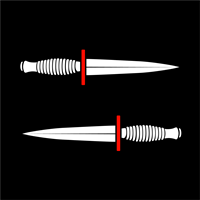
The Army Special Operations Brigade, previously called the Specialised Infantry Group, is a formation of the British Army, initially created as a result of the Army 2020 Refine reorganisation, intended to train foreign forces. Its name and role was adapted after the Defence in a Competitive Age reforms, to a unit that not only trains partner nations, but also fights alongside them in "complex high-threat environments".



















